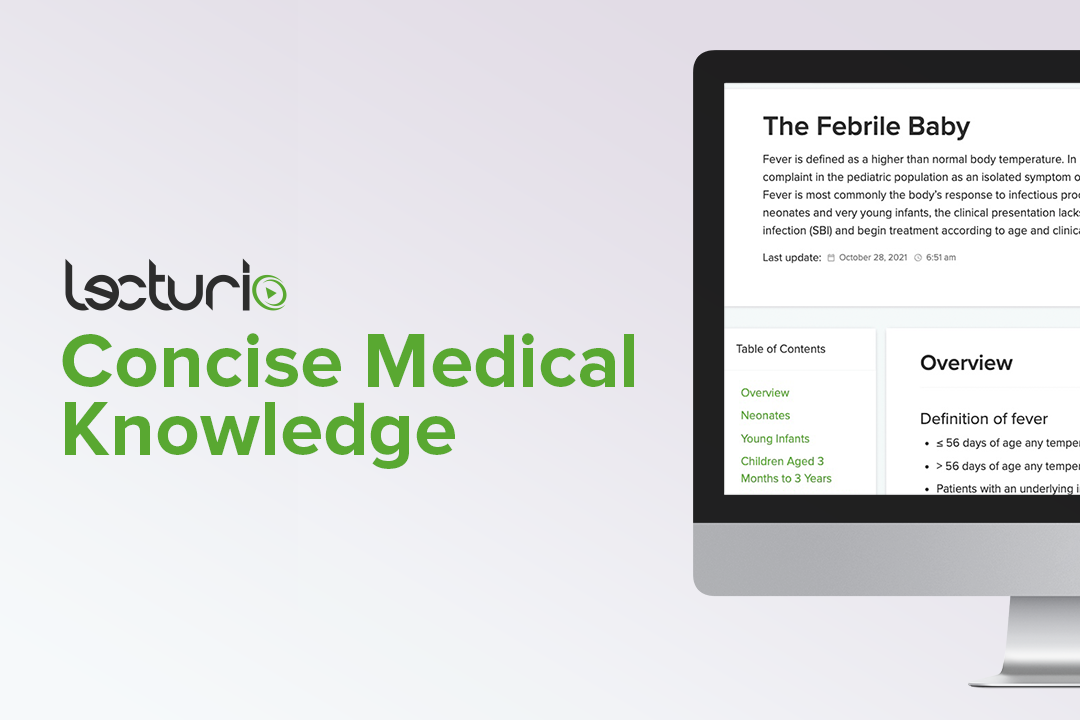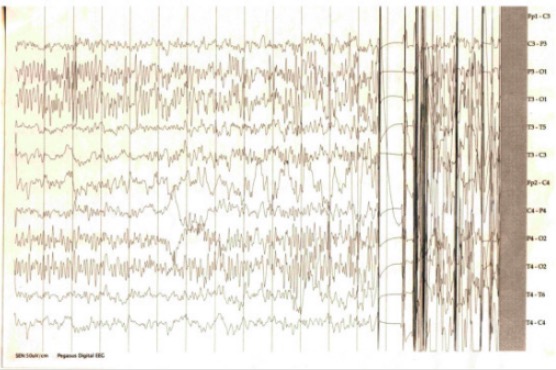Playlist
Show Playlist
Hide Playlist
Febrile Seizure
00:01 The last very benign type of seizure I’ll discuss is febrile seizures. 00:06 These are incredibly common. 00:08 This is the most common cause of seizures in children and it’s by far, and it’s the typical febrile seizure. 00:17 We define a typical febrile seizure for a very good reason and that’s because if you detect it you need to do no work up at all. 00:26 By definition, a febrile seizure must occur between age six months and six years. 00:34 The child must have a fever either during or just after the seizure. 00:40 Remember, it’s not the temperature that’s causing the seizure, it’s actually the inflammatory cytokines such as interleukin 1 that are causing the seizure in the brain. 00:51 So the fever may be slightly delayed after the seizure, in fact it commonly is, so they're just have to have a fever around that time. 01:00 The episode should last less than 15 minutes, and they should have only one episode in the 24-hour period and it should be a generalized seizure. 01:11 A focal seizure is not a febrile seizure. 01:14 If the child meets all of these criteria, this a typical febrile seizure and no work up is necessary. 01:21 For many of us, in the care of children, if we see this child recover and looking better we’re gonna send them home without doing anything. 01:29 We may even do that in some children who are very reassuring appearing and have a high fever if they violate some of this criteria. 01:38 The one I allow violating the most is one episode in 24 hours. 01:43 It’s common for febrile seizure to violate that and for there to be two or three quick febrile seizures. 01:49 Atypical febrile seizures are those seizures that violate one of these rules, but are still considered to be a febrile seizure. 01:58 And so children with atypical febrile seizures usually, might get a brief work-up or a look around to see what’s going on but we won’t worry about it. 02:07 Of course, if the child has a cause of fever that is concerning, you might need to treat the underlying infection or cause. 02:15 What‘s key about febrile seizure is that antipyretics don’t prevent them. 02:21 In other words, telling families use ibuprofen every time your child gets a fever, we want to prevent seizures, will not work. 02:29 In fact, in children who’ve received that counseling, they have the same number of seizure as children who don’t. 02:35 So there are no negative consequences to these seizures. 02:40 It’s not gonna be a problem, but you should counsel families about a few things. 02:44 First, they do run in families. 02:47 In fact, don’t be surprised if at the end of the visit somebody fesses up that when they were a kid they also had seizures. 02:55 Another thing to counsel families about, is that these are benign entities and the question in every parents brain that is burning in the back of their head is, did this cause brain damage? You should come out and tell them their child is gonna be just fine. 03:15 The last thing to worry about is that they can come back. 03:20 One-third of children who prevent was present with febrile seizures will have another before they outgrow them around the age six years of age. 03:30 If the first febrile seizure was before the age of one, that risks increases to 50%. 03:37 So when you’re seeing a family who's come in with a child who’s had a first febrile seizure, it’s important to counsel them about what to do if it happens again. 03:48 Here’s what to do if it happens again. 03:51 First, make sure that child is safe. 03:53 Obviously, if they’re near a fireplace or on a swimming pool, we have to pull them to a safe location. 04:00 Next, tell the family to check their watch. 04:03 This is the last thing the family is gonna do when their child is seizing, but knowing how long a seizure has gone on, is very important in deciding what we need to do to fix it. 04:13 So tell the family to check the time. 04:17 If the seizure lasts more than 5 minutes, the family should call 911. 04:23 They should not place the child in their car and drive at a hundred miles an hour to the nearest ER, because if, God forbid, they had an accident they would now have an accident and a seizing child on the back seat. 04:34 So, the other reason to call 911 is in the United States, an ambulance is available probably within 5 to 10 minutes of every house in the United states. 04:44 As a result, it’s important to recognize that the ambulance brings with it usually anti-seizure medications like, benzodiazepines. 04:54 So the seizure can actually be stopped faster by calling 911 than by rushing to the hospital. 05:01 If a child is cyanotic or blue during a seizure, the parent should call 911 even if it’s only been two minutes. 05:10 That child has respiratory suppression. 05:12 But keep in mind, cyanosis in febrile seizure is very rare. 05:18 Circumoral cyanosis can happen, but that’s not necessarily from hypoventilation or hypoxia that could be from increased vascular tone in the lips causing a decreased perfusion from an adrenal response to the seizure. 05:38 If the seizures resolve within five minute period, and the child never had cyanosis and this is the vast majority, they can just take that child to be evaluated by the pediatrician or a local ER if the pediatrician’s office is closed, within the next few hours. 05:55 Just to make sure there’s not something more going on, and to make sure the child’s fever is taken care of and that it doesn’t reveal some sort of more important underlying infection. 06:05 Remember, and this is key and might be asked. 06:08 One-third of children will have another seizure before they outgrow febrile seizures and half will have a seizure if their first seizure is within the first twelve months. 06:19 Thanks for your attention.
About the Lecture
The lecture Febrile Seizure by Brian Alverson, MD is from the course Pediatric Neurology.
Included Quiz Questions
Which of the following is NOT true regarding typical febrile seizures?
- Seizure starts as a focal seizure then becomes generalized.
- An episode lasts less than 15 minutes
- It must occur between 6 months and 6 years of age.
- Only one seizure in a 24 hour period
- Fever must be documented during or just after the seizure
A 7-month-old child is brought to the ER after a single febrile seizure. The mother is concerned about the chances of another episode. What is the risk of another episode in this child?
- 50%
- Less than 5%
- 20%
- 30%
- More than 90%
When should the parents of a child with febrile seizures call 911?
- When the child becomes cyanotic.
- When the child seizes for more than 1 minute.
- When the child seizes for more than 3 minutes.
- When the father also has a history of febrile seizures.
- If the child sleeps more than usual.
Customer reviews
5,0 of 5 stars
| 5 Stars |
|
1 |
| 4 Stars |
|
0 |
| 3 Stars |
|
0 |
| 2 Stars |
|
0 |
| 1 Star |
|
0 |
Excellent lecture, clear and I always appreciate when the teacher's experience gets mixed in with the lecture. Also, advice to families are well-structured, easy to remember.





